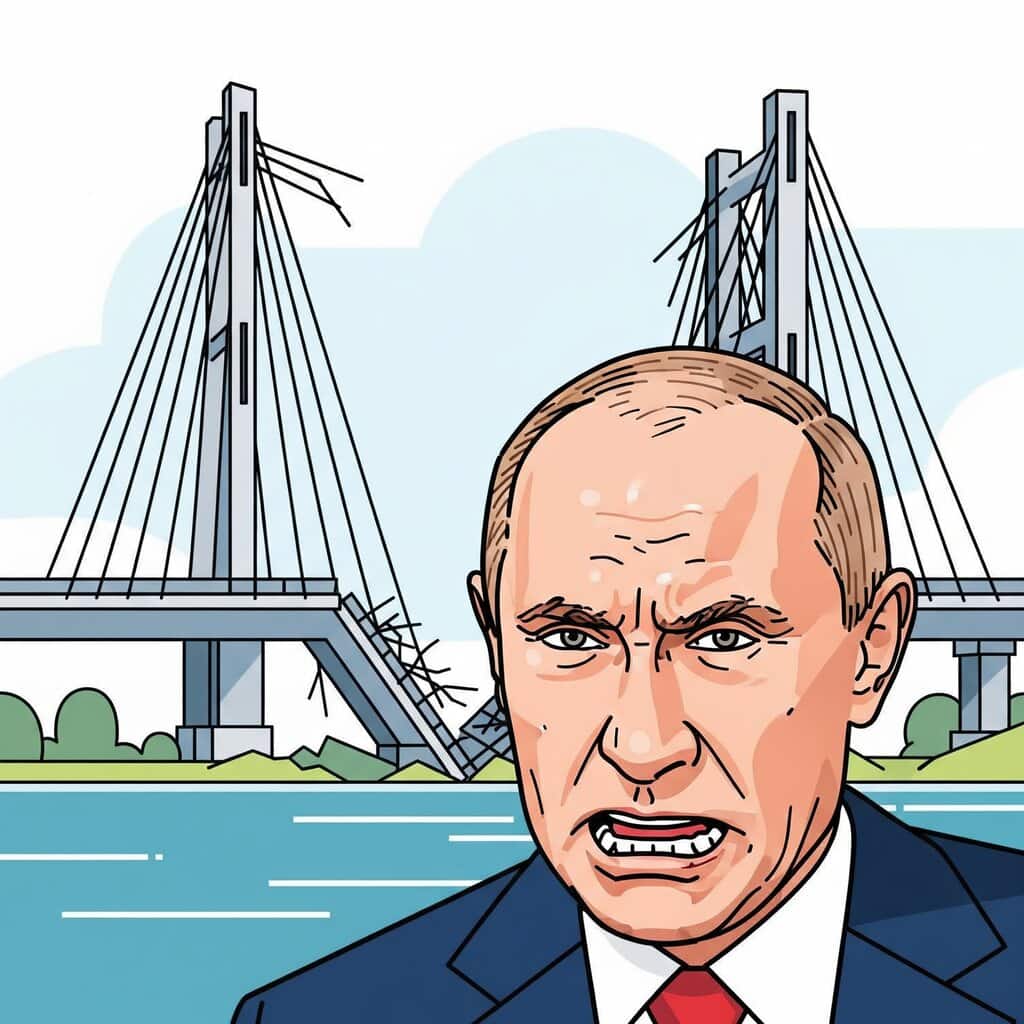Bridge Collapse in Bryansk: On 31 May 2025, a devastating bridge collapse in Russia’s Bryansk region led to the deaths of seven individuals and injured 69 others. The incident occurred when a highway bridge over a railway line collapsed onto a passenger train traveling from Klimovo to Moscow, carrying 388 passengers. This event, along with a subsequent bridge collapse in the neighbouring Kursk region, has raised significant concerns about infrastructure security and the broader geopolitical tensions in the area.
On 31 May 2025, a devastating bridge collapse in Russia’s Bryansk region led to the deaths of seven individuals and injured 69 others. The incident occurred when a highway bridge over a railway line collapsed onto a passenger train traveling from Klimovo to Moscow, carrying 388 passengers. This event, along with a subsequent bridge collapse in the neighbouring Kursk region, has raised significant concerns about infrastructure security and the broader geopolitical tensions in the area.
Details of the Bridge Collapse in Bryansk Region
The collapse happened at approximately 22:41 Moscow time near the village of Vygonichi. As the train approached the A240 road bridge, a powerful explosion caused a section of the bridge to fall onto the railway tracks, leading to the derailment of several carriages. Emergency services responded promptly, with 12 ambulances and rescue teams dispatched to the scene. Among the casualties were the train’s driver and assistant. The presence of several trucks on the bridge at the time of the collapse complicated rescue operations.
Subsequent Incident in Kursk Region
Just hours after the Bryansk incident, another bridge collapse occurred in the Zheleznogorsky district of the Kursk region. A railway bridge over the Trosna-Kalinovka highway collapsed as a freight train passed over it, showering the road below with debris. Three individuals sustained injuries in this event.
Investigation and Allegations of Sabotage
The Russian Investigative Committee has confirmed that both bridge collapses were the result of deliberate explosions. They have initiated a criminal probe into what is being described as a “terrorist act.” Russian officials, including the chairman of the defence committee of the lower house of parliament, Andrei Kartapolov, have accused Ukrainian special services of orchestrating these attacks to derail impending peace talks.
Geopolitical Context and Implications
These incidents occurred on the eve of U.S.-brokered peace talks between Russia and Ukraine, scheduled to take place in Istanbul. The timing has led to speculation that the attacks were intended to influence the negotiations. President Vladimir Putin has been briefed continuously on the situation, and international pressure is mounting for a resolution to the ongoing conflict.
Historical Precedents and Strategic Importance
Bridges have been strategic targets throughout the Russian-Ukrainian conflict. For instance, in August 2024, Ukrainian forces destroyed a key bridge over the Seym River in Russia’s Kursk region, disrupting supply lines. The destruction of such infrastructure hampers military logistics and can have significant implications for the movement of troops and equipment.
Conclusion
The bridge collapse in Bryansk region not only resulted in tragic loss of life but also underscores the vulnerability of critical infrastructure amidst escalating geopolitical tensions. As investigations continue, the incident serves as a stark reminder of the broader implications of infrastructure security in conflict zones.
🔥 Putin’s Possible Response: A Turning Point or Escalation?
President Vladimir Putin’s reaction to the bridge collapse in the Bryansk region is likely to be as calculated as it is forceful. His regime has already labelled the incident a terrorist act, blaming Ukrainian special services, and such a direct assault on Russian infrastructure—especially involving civilian casualties—could serve as a pretext for a new phase of escalation.
Historically, Putin has responded to similar events with a mix of military retaliation, tightened internal security, and amplified anti-Western rhetoric. With peace talks looming, the question is: Will he double down militarily or weaponise this event diplomatically to isolate Ukraine further on the world stage?
If the Kremlin views this as a “red line” moment, we may witness a rapid shift in military posture, possibly even targeted strikes deep into Ukrainian infrastructure. The Russian public, conditioned by years of state media narrative, may support a harder line—especially after domestic fatalities.
Is This the Beginning of the End for Zelensky?
For Ukrainian President Volodymyr Zelensky, this incident arrives at a crucial juncture. Domestically, he must maintain unity under intensifying conditions, while internationally, he faces the risk of eroding Western support if Ukraine is seen as escalating rather than de-escalating.
Could this event mark a tipping point? If Russia uses it to stall or sabotage peace talks—and the West views Ukraine as the instigator—Zelensky could find himself politically cornered. His leadership, once symbolic of defiance, may now be tested by a new wave of diplomacy fatigue, internal unrest, and shifting allegiances.
Will he emerge stronger, or is this the beginning of his political twilight?
🗨️ What Do You Think?
- Will Putin escalate militarily or use this as leverage at the negotiating table?
- Is Zelensky still seen as a wartime leader—or has international confidence in him begun to fade?
- Do these incidents signal a new phase of the conflict—or the beginning of its end?
Leave your thoughts below as this is a moment that could define the region’s future.
External Resources:


We want to hear your what you have to say